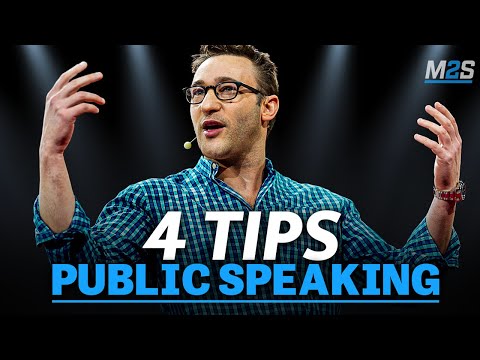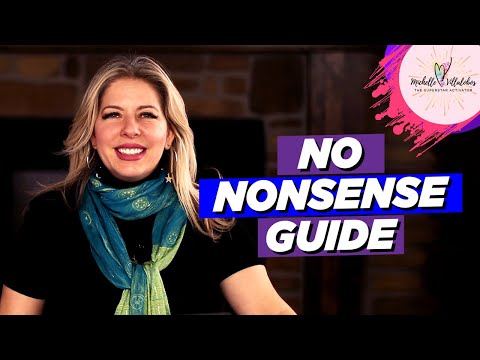Creating and nurturing a successful speaking brand in 2024 requires more than charisma and articulation. To truly stand out, you need to dive deep into how to build a speaking brand that resonates powerfully with your audience. This guide reveals the secrets that will help you craft a brand that not only captivates but leaves a lasting impact.
![5 FAST ways to get PAID Speaking Gigs [fill your calendar]](https://www.conniepheiff.com/wp-content/cache/flying-press/uA-jjJ64jk4-hqdefault.jpg)
1. Define Your Unique Value Proposition
To stand out in the crowded speaking marketplace, it’s crucial to identify and communicate your unique value proposition (UVP). Reflect on what makes you different from other speakers. This could be your personal story, expertise in a niche area, or a distinctive delivery style. Consider Simon Sinek’s concept of starting with ‘Why’—understand and articulate why you do what you do, and how that purpose resonates with your audience.
Follow these steps:
– Self-Reflection: Identify your core strengths and passions.
– Market Research: Understand what is already out there and find your gaps.
– Feedback: Ask peers and mentors for their views on your unique qualities.
Positioning yourself as an expert requires understanding personal branding strategies and implementing them strategically. Check out personal branding Strategies to refine how you present yourself.

2. Craft a Compelling Brand Story
Your brand story is the narrative that connects your audience to your vision and mission. Think of Brené Brown, whose research on vulnerability and courage forms the backbone of her brand. Use storytelling strategies to share your journey, values, and the impact you aim to create. This narrative should be woven consistently through your talks, marketing materials, and online presence.
Key elements include:
– Your Journey: Share experiences that shaped you.
– Values and Mission: Clearly define what you stand for.
– Impact Goals: Show how you plan to make a difference.
Utilize storytelling techniques to engage your audience verbatim. Ava DuVernay’s speeches are great examples to inspire.

| Aspect | Details |
| Unique Value Proposition (UVP) | Identify What Sets You Apart – Determine your niche – Highlight your unique experiences and skills – Address specific problems you solve for your audience |
| Content Creation | Showcase Expertise – Develop a content calendar – Write blog posts, whitepapers, and articles – Create videos and podcasts – Publish books or eBooks |
| Consistency | Maintain Regular Sharing – Post consistently across platforms – Keep messaging aligned with your UVP |
| Audience Engagement | Build Connections – Respond to comments and messages – Host live Q&A sessions – Create interactive content like polls and surveys |
| Online Presence | Utilize Multiple Platforms – Maintain a professional website and blog – Be active on key social media platforms – Utilize email marketing campaigns |
| Networking | Expand Visibility – Attend industry conferences and seminars – Join professional organizations – Engage in online networking communities |
| Speaking Engagements | Gain Real Experience – Start with smaller events to build your portfolio – Offer to speak at local events or organizations – Seek testimonials and feedback from your audiences |
| Brand Partnerships | Collaborate for Growth – Partner with other speakers or brands – Engage in co-authoring or joint content initiatives |
| Personal Development | Invest in Yourself – Take speaking and business courses – Receive coaching and mentorship – Stay updated with industry trends |
| Metrics and Feedback | Measure Success – Track audience growth and engagement metrics – Conduct surveys to gather audience feedback – Adjust strategies based on performance insights |
3. Build a Strong Online Presence
In the digital age, your online presence is often your first impression. Leverage platforms like LinkedIn, YouTube, and personal websites to showcase your expertise. For example, Tony Robbins uses his website and social media to offer consistent value through blogs, videos, and podcasts. Invest in high-quality content that reflects your brand and engages your audience.
Effective strategies include:
– SEO Optimization: Use keywords like “how to build a speaking brand” liberally but naturally.
– Consistent Posting: Maintain a steady stream of valuable content.
– Engage with Followers: Respond to comments and messages to build a community.
Consider speaker brand development techniques to further enhance your presence. Check out speaker brand development for more insights.

4. Develop a Signature Speech
A signature speech is a cornerstone of your speaking brand. It should encapsulate your key messages, stories, and unique perspective. Ava DuVernay’s speeches often address diversity in the film industry, incorporating personal anecdotes and tangible advice. Your signature speech should be adaptable to different formats and audiences while retaining its core essence.
Tips for crafting your speech:
– Core Message: Clearly articulate your central idea.
– Engaging Stories: Use personal stories to illustrate points.
– Flexibility: Adapt to various audience types and settings.
This speech will become your most powerful tool in coaching for public speakers. Get expert advice on coaching For public Speakers to fine-tune your delivery.

5. Network with Industry Leaders
Building relationships with industry leaders can elevate your speaking career. Engage with influencers, attend conferences, and contribute to collaborative projects. Consider how entrepreneur Gary Vaynerchuk consistently networks within the digital marketing community, leveraging these connections for mutual benefit and increased visibility.
Steps to effective networking:
– Attend industry events: Be present at major conferences and seminars.
– Online Engagement: Join relevant groups on LinkedIn and other platforms.
– Follow-Up: Maintain relationships through regular touchpoints.
Take note of successful networkers like Mel Robbins who leverage their connections while continuously analyzing data from their online engagement to refine their brand strategies.
6. Utilize Data-Driven Marketing Strategies
Harnessing data can optimize your marketing efforts. Track engagement metrics, analyze audience feedback, and refine your strategies accordingly. For instance, Mel Robbins extensively uses data from her online engagement to tailor her content and marketing strategies, ensuring maximum reach and impact.
Data utilization strategies:
– Engagement Metrics: Track likes, shares, and comments.
– Customer Feedback: Use surveys and feedback forms.
– Performance Analytics: Regularly review your website and social media analytics.
For example, understanding how do septic tanks work or How do septic Tanks work could also be a unique example you could relate during a speech to explain intricate systems in simple terms, engaging your audience effectively.
7. Diversify Your Revenue Streams
A diversified income stream strengthens your financial stability and broadens your brand’s reach. Explore different avenues such as webinars, corporate training, books, and online courses. Look at how Rachel Hollis turned her brand into a multifaceted empire by combining public speaking, best-selling books, and an online coaching platform.
Diversification tactics:
– Webinars and Online Courses: Offer educational content.
– Books and E-courses: Publish your knowledge.
– Corporate Training: Offer training sessions for companies.
For instance, understanding repo homes for sale or Repo Homes For sale can be an analogy for explaining how varying revenue streams can support your financial goals.
Embrace Innovation and Continuous Learning
In an ever-evolving industry, staying abreast of the latest trends and technologies is essential. Continuously hone your craft through professional development and adapt to new platforms and formats. Innovators like Larry Kim, founder of MobileMonkey, continuously evolve his strategies by staying ahead of digital marketing trends, ensuring that his brand remains relevant and impactful.
Strategies for continuous learning:
– Online Courses: Attend webinars and e-courses.
– Industry Publications: Subscribe to industry magazines and journals.
– Networking: Join think tanks and mastermind groups.
By following these steps, you’ll build a speaking brand that stands out and makes a significant impact in the lives of your audience. The journey may be tough, but with determination and strategic planning, success is within reach.
For even more tips, explore leadership development Tips to further refine your strategy. With the right approach, you’ll leave a legacy, just like motivational speakers such as Tony Robbins and Gary Vaynerchuk.
Now it’s your turn to take these secrets and how to build a speaking brand to heart. Start today, and watch your speaking career soar!
Feel free to reach out to learn from more inspiring stories like that of Eden Tirl and influential figures with an impressive Mat Ishbia net worth. Ready to take the next step? Post-a-bid for your speaking engagements and make your mark in the industry. Visit Post-a-bid today.
How to Build a Speaking Brand
Trivia About Famous Speakers
Did you know that some of the world’s top orators had modest beginnings? For instance, Tony Robbins, now a giant in the self-help industry, once worked as a janitor. This little-known tidbit goes to show that great brands often come from humble origins. Similarly, Oprah Winfrey, a powerhouse in media and motivational speaking, started out as a local news anchor. These stories remind us that you don’t need a grand start to make a big impact. Oprah Winfrey’s transformation( from a small-town anchor to a global icon also illustrates the power of authenticity and hard work in building a speaking brand.
Secret Strategies from Success Stories
Speaking of strategies, did you know TED Talks have specific guidelines for their speakers? They insist on keeping presentations under 18 minutes. This constraint encourages succinctness and helps speakers pack a punch within a short time frame. By adopting similar practices, you can keep your audience engaged( and yearning for more. Additionally, many successful speakers, like Simon Sinek, focus on storytelling techniques. His idea of starting with “why” invites listeners on a journey, creating deep emotional connections. Crafting your narrative thoughtfully can be a game-changer in how you resonate with your audience.
The Power of Personal Branding
Fun fact: Did you know that Steve Jobs never used a laser pointer during his iconic presentations? Instead, he relied on his charisma and the storytelling power of his slides. This approach shows that sometimes less is more. These simple techniques teach us that building a personal brand( often means trimming the excess and focusing on what makes you, you. In essence, allowing your personality to shine through your speeches can be the secret sauce that sets you apart.
Understanding how to build a speaking brand isn’t only about the techniques but embracing these little insights that offer a unique perspective. As you embark on your journey, think about how these trivia points can influence and inspire your path. After all, knowing the history and habits of those who’ve made it can offer valuable lessons that are more than just footnotes in a successful career.

How to build your brand as a speaker?
Start by figuring out what makes you stand out and what you can offer that’s unique. Share content regularly that highlights your expertise and make sure to engage with your audience on different social media platforms. Networking is key, so get out there both offline and online to grow your visibility.
How to start a speaking company?
Kick things off by defining your niche and what value you bring to the table. Create a business plan that covers your services, market, and revenue streams. Develop your brand, including a logo, website, and marketing materials. Start building a network and get your name out through social media, speaking engagements, and events.
How do you develop a brand voice?
Your brand voice should reflect who you genuinely are and resonate with your target audience. Think about your values, your tone, and the language you use. Keep it consistent across all your communications, whether it’s a blog, social media, or a public speaking event.
How do I sell myself as a public speaker?
To sell yourself as a public speaker, highlight your unique point of view and specific expertise. Build a polished online presence with a professional website and active social media profiles. Showcase testimonials and past speaking engagements to build credibility.
Can I make money as a public speaker?
Absolutely, you can make money as a public speaker. Revenue can come from speaking fees, selling products or consulting services, and even affiliate marketing. The key is to consistently provide value and build a strong reputation.
How do you become a paid speaker?
To become a paid speaker, start by gaining experience through free or low-cost speaking opportunities. Build a portfolio with videos, testimonials, and a professional website. Network with event organizers and market yourself both online and offline.
How to grow a speaker business?
Growing a speaker business requires diversifying your revenue streams, such as offering workshops, webinars, and private coaching. Continuously market your services, network actively, and seek out speaking gigs that keep you in front of new audiences.
How much do speakers get paid?
Speaker fees can vary widely based on experience, reputation, and event size. New speakers might earn a few hundred dollars per event, while top speakers can command tens of thousands. It’s all about the value you bring and how well you market yourself.
How much do speaking agents make?
Speaking agents typically work on commission, taking a percentage of your speaking fee. This can range from 10% to 25%, depending on the agent and the level of service they provide.
What are the 3 C’s of brand voice?
The 3 C’s of brand voice are Consistency, Clarity, and Character. Consistency means keeping your voice the same across all platforms. Clarity ensures your message is easy to understand, and Character gives your brand a unique personality.
What is Nike’s brand voice?
Nike’s brand voice is bold, inspiring, and confident. They’re known for motivating their audience to take action, push their limits, and just do it, embodying a spirit of perseverance and achievement.
What is an example of a strong brand voice?
A strong brand voice example is Apple’s, which is simple, clear, and direct. They communicate in a way that’s friendly yet professional, aligning perfectly with their brand identity of innovation and user-centric design.
How do you brand yourself as a speaker?
To brand yourself as a speaker, focus on what makes you unique and align that with your audience’s needs. Develop a consistent message and visual identity across all your platforms. Engage with your audience through various channels and maintain a professional online presence.
How do you monetize public speaking?
Monetizing public speaking involves getting paid for speaking engagements, offering related services like coaching or consulting, and selling products such as books or online courses. Create multiple income streams and leverage your expertise.
How much is a public speaker worth?
How much a public speaker is worth depends on their experience, niche, and demand. Fees can range from a few hundred dollars for local events to tens of thousands for high-profile conferences. It’s important to research and understand the market rates.
How do I establish myself as a speaker?
To establish yourself as a speaker, identify your niche and become an expert in it. Create valuable content, engage with your audience, and build a network of contacts. Offer to speak at events for free initially to build your portfolio and gain exposure.
How does a speaker build logos?
A speaker builds logos or logical arguments by providing well-researched information, using data and statistics to support their points, and structuring their content in a clear, logical way that’s easy for the audience to follow.
How do I become a successful speaker?
Becoming a successful speaker involves mastering your topic, honing your speaking skills, and understanding your audience. Market yourself effectively, seek out speaking opportunities, and continuously work on improving your craft.
How much do companies pay for speakers?
The amount companies pay for speakers varies greatly. Smaller events might offer a few hundred dollars, while major conferences can pay several thousands, especially for well-known or highly experienced speakers. Researching industry standards can give you a better idea.









